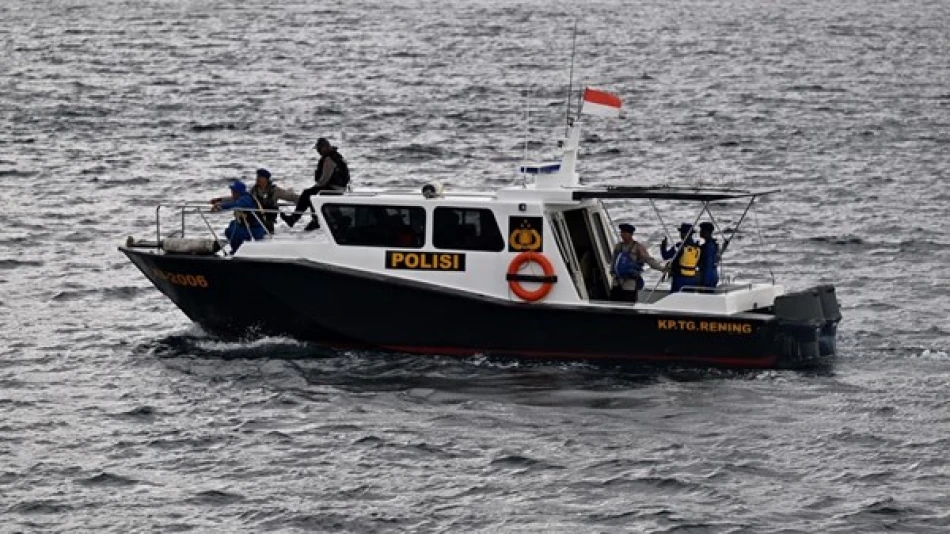
Tragedy at Sea: Passengers Missing After Boat Capsizes off Sumatra Coast
Indonesia's Maritime Safety Crisis Deepens as 11 Missing in Latest Sumatra Boat Disaster
Eleven people remain missing after a passenger boat sank off Indonesia's Sumatra coast yesterday, highlighting the archipelago nation's persistent struggle with maritime safety standards. The incident near the remote Mentawai Islands underscores how Indonesia's geography—spanning 17,000 islands—creates both transportation challenges and regulatory gaps that continue to claim lives.
Search Operations Continue in Treacherous Waters
Indonesian authorities confirmed that rescue teams have recovered only seven of the 18 passengers who were aboard the vessel when it went down near the Mentawai Islands, located off Sumatra's western coast. Search operations remain active as teams comb the waters for the eleven missing individuals.
The Mentawai Islands, known for their surfing destinations and indigenous communities, are accessible primarily by boat from the mainland. The remote location complicates rescue efforts, as emergency response times are significantly longer than in more populated coastal areas.
Indonesia's Recurring Maritime Nightmare
A Pattern of Preventable Tragedies
This latest incident fits a troubling pattern across Indonesia's vast maritime network. The country's reliance on inter-island boat transport, combined with inconsistent safety enforcement, creates conditions where accidents occur with alarming regularity. Unlike developed maritime nations with strict vessel inspection regimes, Indonesia's scattered geography makes comprehensive oversight extremely challenging.
The frequency of these incidents reflects deeper structural issues: aging fleets, overloaded vessels, inadequate life-saving equipment, and weather-related risks that are often underestimated by operators seeking to maintain schedules.
Geographic Challenges Drive Risk
Indonesia's 17,000-island archipelago creates unique transportation demands that few other nations face. While countries like Greece or the Philippines also manage extensive island networks, Indonesia's sheer scale—stretching across three time zones—makes centralized safety monitoring nearly impossible.
The economic pressure on boat operators to serve remote communities often conflicts with safety protocols. Many vessels operate on thin margins, making investments in safety equipment or regular maintenance financially difficult.
Regulatory Response and Long-term Solutions
Indonesia's maritime safety record has drawn international attention, particularly as the country seeks to boost tourism to destinations like the Mentawai Islands. The government has announced various safety initiatives over the years, but implementation across such a vast territory remains inconsistent.
The economic implications extend beyond immediate tragedy. Each incident damages Indonesia's reputation as a safe destination for both domestic and international travelers, potentially affecting tourism revenue and local economic development in remote areas that depend heavily on visitor traffic.
Effective solutions likely require a combination of improved vessel standards, better weather monitoring systems, enhanced rescue capabilities, and possibly subsidized safety equipment for smaller operators serving essential routes to remote communities.
Most Viewed News

 Layla Al Mansoori
Layla Al Mansoori






